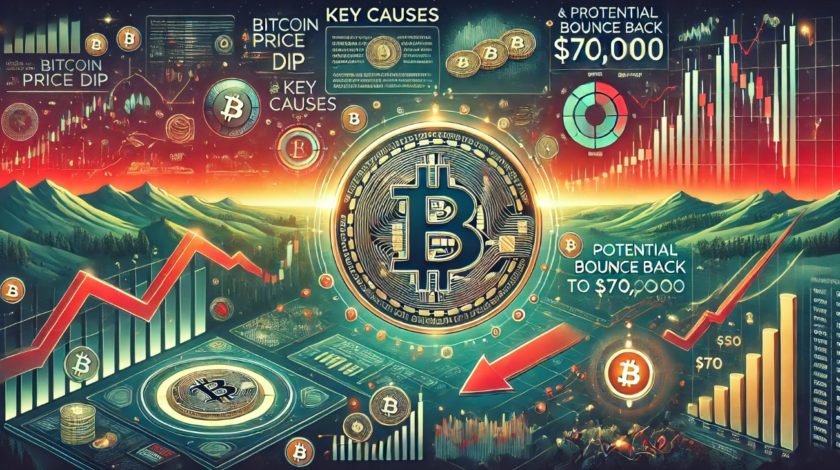In our Expert Takes, opinion leaders from inside and outside the crypto industry express their views, share their experience and give professional advice. Expert Takes cover everything from blockchain technology and ICO funding to taxation, regulation and cryptocurrency adoption by different sectors of the economy.
If you would like to contribute an Expert Take, please email your ideas and CV to george@cointelegraph.com.
The views expressed here are the author’s own and do not necessarily represent the views of Cointelegraph.com
Tokenization is nothing new
The term “tokenization” is mainly associated with securities, equities and real assets, and it indicates the creation of a digital token which represents ownership rights of the underlying assets and which is issued on a blockchain.
But tokenization is nothing new, per se. It is an evolution of derivative instruments and securitized assets such as an asset-backed security (ABS). For instance, the collateralized debt obligations (CDOs) and mortgage-backed securities (MBSs) at the heart of the 2008 financial crisis were essentially tokens representing debt. The first examples of securitizations go back to the 17th and 18th centuries.
Despite the beliefs about the potential of Securities Token Offerings (STOs) — and literally dozens of tokenization platforms springing up in the last 12 months with plenty of businesses willing to try to raise funds with them — very little practical progress has been made so far. Notwithstanding the announcements of imminent issuance of tokens representing equities or real assets, none have yet been practically issued.
Perceived advantages of tokenization
Governance participation mechanisms and automated dividend payments — which can be embedded in the smart contract — are often cited among the biggest advantages, together with the reduction of back-office work, the reduction of costs for the issuing companies and 24/7 trading.
Fractional ownership is indeed also important — as it helps democratize investing — but it is also not new, and tokenization is just a new tool to achieve what has already been done in the past through fractional ownership of real estate or club-deals.
Securitization vs tokenization
So, in what ways do securitization and tokenization differ in practice? Two things, essentially:
(i) The issuance of the token on a blockchain.
(ii) The tradability/liquidity of the token on a digital secondary market.
But the blockchain has one fundamental feature: enabling the peer-to-peer trusted transfer of digital values while providing certainty and immutability of that transfer. The first-ever blockchain — that of Bitcoin — was created to allow peer-to-peer transfers of Bitcoin, not of real assets. By definition, its use can be easily extended to other digital assets or rights — such as digital photos, music or e-books — which will massively benefit from the certainty and immutability which are intrinsic to the blockchain.
But as far as real assets or equities are concerned, the transfer and ownership of titles are regulated by the law. Each jurisdiction has its own legal authorities which enable and certify such transfers. Real estate and land transfers are generally effective upon their recording into Land Registries (at least in civil law countries, while the situation is more complex in countries such as the United States, where the adoption of a public blockchain-based system can likely introduce certainty to the title ownership and cut conveyance costs and risks), car sales when entered into the motor vehicle registry and sales of equities in private companies when recorded into the companies´ registry. All those transactions are also likely to be certified by public notaries in most jurisdictions. The issue here is not to advocate whether future blockchain adoption may enhance the existing public systems of real estate or corporate ownership titles of any individual jurisdiction — which is also probably true — but to simply evaluate whether the blockchain has some scope of use for tokenizing real assets or private equities within the existing systems.
Thus, here is the real question to answer: Does the on-chain tokenization of real assets and private equities bring more advantages or more problems in respect to a simple off-chain tokenization?
Tokenization use cases
Let’s look at two use cases: Use case A is the issuance of tokens representing private equity, while use case B is the issuance of corporate bonds/commercial papers or other corporate debt instruments by the same private company.
In case A, a Special Purpose Vehicle (SPV) is needed as a vehicle for all the token holders to have a single entry in the XYZ cap table. The SPV subscribes to XYZ’s share capital increase and owns the shares issued. The SPV will be managed by a nominee director under the terms of Trust Agreement I for the benefit of token holders. 100 percent of the shares of the SPV will be owned by Trust I for the benefit of the token holders. Trust Agreement I issues the tokens representing 100 percent of the SPV’s share capital.
Under Trust Agreement II, the shares of XYZ, which are owned by the SPV, are held for the beneficial ownership of token holders. Note that in this case, trusted third parties — such as a public notary and the company registry, are statutorily required in order to validate transactions. Therefore, in my opinion, the use of the blockchain unnecessarily complicates things without bringing noticeable advantages.
In case B, rather, the same private company issues corporate debt. Because there are no statutory requirements for third party validation in the issuance of debt instruments — such as the need to record it on a public registry — the token and the debt instrument are substantially the same thing and function on the same level. Therefore, XYZ can be issued directly to single buyers with the tokens representing its debt. Tokens can be issued on the Ethereum blockchain and a smart contract will embed the terms of the debt issuance in the token, such as automatic coupon/yield payments and the repayment of the principal at the duration expiration with subsequent burning of all the tokens redeemed. Case B is therefore a good candidate for on-chain tokenization.
Tokenizing real assets off-chain
As seen above in use case A, when dealing with legally trusted authorities (such as land or company registries) the blockchain’s main functions — which are to guarantee trust, transparency, immutability, non-corruption of data and non-duplication — are already performed by such authorities. Blockchain is therefore redundant.
Well-practised, traditional legal structures such as SPVs, trustees, nominees and escrows — backed up by collaterals such as a mortgage or a pledge — are still needed to guarantee to the investor that the issued token is tied to the real-world asset. This, because of the contractual promise — even if it is embedded in the smart contract — remains just an “unsecured contractual promise” that, without a collateral guarantee, still poses all the enforceability issues of any unsecured (but contractual) promise. And until those public registries are not on the blockchain themselves, the smart contract has limited practical application. Enforcement/execution for real assets takes place off-chain and, therefore, must be secured with traditional guarantees that can only function off-chain.
Moreover, with such complex transaction structures, mistakes and disputes happen all the time and they need to be promptly rectified or solved. With public registries or with trusted parties, mistakes can be easily rectified and disputes solved. Instead, blockchains´ immutability and irreversibility features then become drawbacks. Without an appropriate mechanism for dispute resolution and reversibility, the blockchain can render real-asset transactions unmanageable.
Therefore, in my opinion, the practical aspects of an on-chain real-asset tokenization are still generally insufficiently appreciated. However, when this is done, it appears that — in many cases — it is more efficient to tokenize/digitize real assets off-chain.
Guaranteed liquidity is the key prerequisite
Most importantly, what is still missing from the picture — and it is certainly the essential prerequisite for any tokenization either on- or off-chain — is the guaranteed liquidity and the possibility for the investors to effectively trade the tokens. Surprisingly, not much progress has been done on that very fundamental issue.
Only if deep pools of liquidity are brought in to ensure adequate market making, then tokenized assets may possibly scale up in the future to match traditional financial instruments.
Conclusions
Summing it up:
- Above all, deep liquidity of the digital secondary market is a prerequisite for any tokenization.
- We can tokenize assets on-chain or off-chain.
- Not every asset is suitable to be tokenized on-chain.
- On-chain tokenization is advisable when the asset can be freely transferred without the statutory need of a third-party, off-chain validation (such as with corporate debt — as in Case B above — or, for example, with unregistered real assets, such as objects of art, or plain digital assets, such as digital photos, music, etc.). Here, the blockchain fully performs its main functions, which are guaranteeing trust, transparency, immutability, non-corruption of data and non-duplication.
- Off-chain tokenization is advisable when there is a statutory need for a third-party, off-chain validation of the transaction (such as with private equities — as in Case A above — or with real estate, cars, boats, planes, etc.). Here, the blockchain is redundant because its main functions are already performed by the third-party validation off-chain.
- Of course, if and when those statutory registers will be on-chain themselves, then on-chain transactions will be possible also for real assets, and the smart contract will be able to close the loop and to reconcile the ownership title of a real asset off-chain with the digital token (representing the asset) on-chain.
- Of course, the above conclusions may vary depending on the jurisdiction (e.g., real estate on-chain tokenization may be advisable in the U.S. and not in Germany or Italy).
Legal Disclaimer: This paper is for general guidance only and it does not constitute legal advice. As such, it should not be used as a substitute for consultation with lawyers on specific issues. All information in this paper is provided “as is,” with no guarantee of completeness, accuracy, timeliness or warranty of any kind, expressed or implied.
Legal Disclaimer: This paper is for general guidance only and it does not constitute legal advice. As such, it should not be used as a substitute for consultation with lawyers on specific issues. All information in this paper is provided “as is,” with no guarantee of completeness, accuracy, timeliness or warranty of any kind, expressed or implied.





